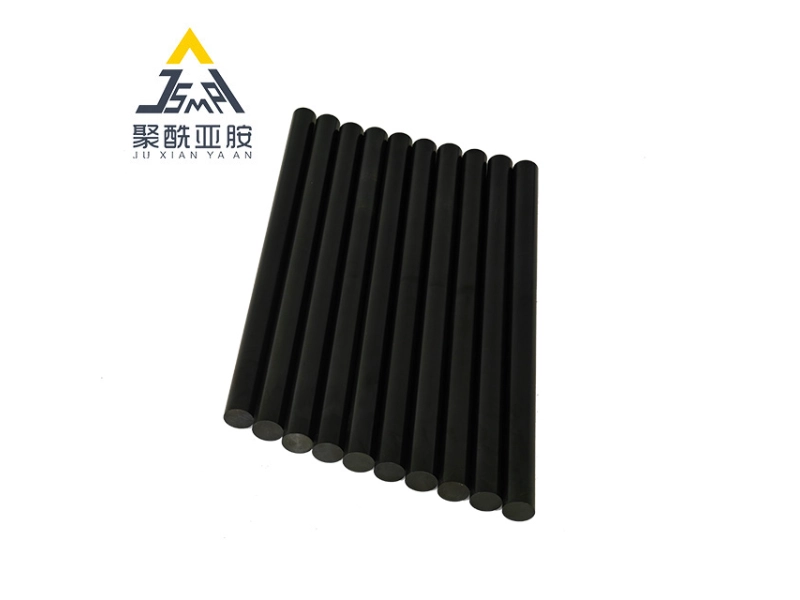A Future of Electronic Devices: Exploring Conductive-Grade Polyimide Materials

The rapid progress in electronic materials are paving the way for innovative solutions in multiple industries. Within these developments, conductive polyimide resins are emerging as a game-changer, particularly in the area of high-performance applications. These resins represent known for their outstanding thermal stability, mechanical strength, and versatility, making suitable for strict environments. The conductive polyimide rod is a notable manifestation of this technology, offering special properties that can improve electronic designs.
In aviation, where performance and reliability are essential, the use of polyimide rods becomes more and more prevalent. Weight-efficient yet strong, these rods can endure extreme temperatures and harsh conditions, which makes suitable for applications in aircraft and spacecraft. The integration of conductive polyimide rods in aerospace components not only contributes to weight savings but also allows efficient electrical conductivity, essential for advanced electronic systems. In https://unitsummer9.werite.net/transitioning-from-prototype-designs-into-manufacturing-the-role-of-polyimide , the potential of conductive polyimide resins indicates a transformative shift in how utilize electronic materials in high-performance settings.

Guide to Conductive Polyimide Resins
Electrically-Conductive polyimide resins have appeared as a transformative material in the electronic industry, particularly due to their unique combination of conductive properties and heat resistance. These high-performance polymers are formulated to include conductive fillers, allowing them to retain their structural integrity while enabling efficient electrical performance. As technology develops, the desire for lightweight and long-lasting materials expands, making conductive polyimide resins a crucial player in diverse applications, including flexible circuits and electronic components.
One of the most significant features of electrically-conductive polyimide resin rods is their fitness for the space industry. In this sector, the need for materials that can endure extreme conditions while providing reliable performance is vital. High-performance polyimide rods not only meet these rigorous requirements but also provide considerable weight savings compared to standard materials. This makes them well-suited for applications such as insulation, support structures, and thermal management systems where both trustworthiness and effectiveness are paramount.
The flexibility of conductive polyimide resin rods spans beyond aerospace, as they are progressively being applied in fields such as car manufacturing, telecom, and consumer electronics. Their ability to be processed into various forms and sizes facilitates innovative designs in electronic equipment. As research continues to advance in this area, the prospects of electrically-conductive polyimide resins looks encouraging, paving the way for next-generation electrical applications that focus on efficiency and durability.
Superb Polyimide-based Rods
Exceptional polyimide-based rods have surfaced as a crucial material in various applications due to their superior thermal stability and electrical conductivity. Such rods are crafted to withstand extreme temperatures while preserving their mechanical integrity, making them ideal for rigorous environments. These distinctive properties enable them to perform effectively in applications where standard materials would not succeed, for instance in aerospace and advanced electronics.
In the aerospace industry, the requirement for light and resilient materials is paramount. High-performance polyimide rods satisfy this demand by offering the strength and resilience needed for structural components and electrical insulation. Such rods contribute to the performance and reliability of aerospace systems, where lessening weight can significantly enhance fuel efficiency and overall performance. The ability to sustain functionality under harsh conditions renders these rods a preferred choice among engineers and designers in aerospace manufacturing.
Moreover, the adaptability of high-performance polyimide rods enables customization to suit specific applications. Manufacturers can modify the properties of these rods, including their conductivity and thermal resistance, to satisfy the precise needs of multiple industries. As technology advances and the expectations for more efficient and durable materials grow, high-performance polyimide rods are set to assume an essential role in defining the future of electronics and other key sectors.
Applications in the Space Sector
Conductive polyimide resin rods are growing notable attention in the aerospace industry due to their remarkable thermal stability and lightweight properties. These characteristics render them suitable for top-performance applications where standard materials might be inadequate. Engineers are rapidly incorporating these rods in components that require endurance and resistance to severe conditions, such as in aircraft wiring systems and structural components that face thermal challenges.
The use of conductive polyimide rods is also transformative in the creation of advanced sensors and actuators used in aerospace applications. Their ability to conduct electricity while maintaining structural integrity allows for creative design solutions. These rods enable the reduction of electronic systems, ultimately contributing to improved performance and efficiency in avionics and in-flight systems.
In addition, as the aerospace industry keeps to push the frontiers of technology with advancements in composite materials, conductive polyimide rods serve as a ideal complement. They can be seamlessly integrated with multiple composite structures, enhancing their electrical properties without compromising weight or strength. This integration is essential for the next generation of aircraft, which demand lighter and efficient materials to meet rigorous fuel efficiency and performance standards.
Future Trends in Polyimide Technology
The future of electrically conductive polyimide resins is poised for significant advancements, especially as sectors demand more long-lasting and efficient materials. Breakthroughs in polymer chemistry are leading to the development of high-performance polyimide rods that show outstanding mechanical properties and thermal stability. These advancements are essential for uses in challenging environments, such as aerospace, where materials must endure extreme temperatures and stress while maintaining conductivity.
Furthermore, the aviation industry is steadily incorporating conductive polyimide rods into their designs, acknowledging the need for lightweight yet robust materials. As aircraft aim for greater fuel efficiency and reduced weight, polyimide resins offer an ideal solution. Their ability to integrate conductivity with lightweight characteristics makes them appealing for use in multiple aerospace applications, including wiring, sensors, and framework elements, facilitating superior performance and reliability in flight.
Looking ahead, sustainability will play a crucial role in the evolution of polyimide technology. With a growing emphasis on eco-friendly materials, research is focusing on developing biodegradable or repurposable polyimide resins. This shift not only addresses ecological concerns but also explores new pathways for premium materials that maintain the advantageous properties of conventional polyimides, subsequently solidifying their place in the next generation of electronic applications.
